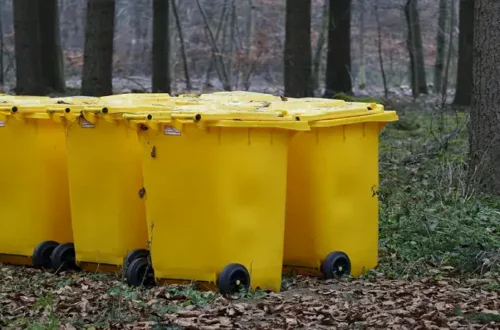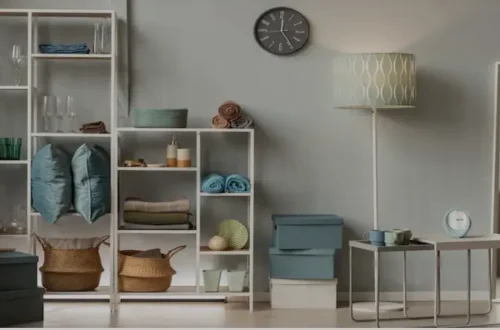Your roof is one of the most critical components of your home, safeguarding you and your belongings from the elements. Over time, even the most durable roofs start to show signs of wear. Knowing when it’s time to replace your roof can save you from larger, costlier issues in the future. In this article, we’ll break down the key indicators to look for, helping you determine whether a roof replacement is necessary.
1. Age of the Roof
One of the most straightforward ways to gauge the condition of your roof is its age. Asphalt shingles, the most common roofing material, typically last between 20 and 30 years. If your roof is within or has surpassed this age range, it may be time to start considering a replacement. Other materials, like metal or tile, can last significantly longer, but they also require periodic assessments.
If your roof is reaching the end of its lifespan, even minor problems might signal more significant underlying issues. Contact Iron Head Roofing for a professional inspection to evaluate whether a repair or full replacement is needed.
2. Curling or Missing Shingles
Over time, shingles can curl, crack, or even fall off, leaving your home vulnerable to water infiltration. If you notice shingles that are buckling or missing altogether, this could be a sign that the roof is no longer providing the necessary protection.
Shingles that are curling upward or cupping along the edges also suggest that moisture is beginning to penetrate, which can lead to leaks and structural damage. If these signs are widespread across the roof, it’s a strong indication that a replacement should be considered.
3. Leaks and Water Damage
Water damage inside your home is one of the clearest signs that your roof may need attention. If you notice water stains on your ceiling or walls, water is likely seeping through your roof. While small leaks may be repaired, they often indicate a broader issue, especially if the roof is aging.
Leaks not only damage the structure of your home but can also lead to mold growth, which can be hazardous to your health. A professional inspection will determine whether a repair will suffice or if the roof has deteriorated to the point of needing a full replacement.
4. Granules in the Gutter
As asphalt shingles wear down, they begin to shed granules, which can accumulate in your gutters. These granules protect the shingles from the sun’s UV rays, and once they begin to erode, the shingles lose their effectiveness. If you notice an excessive amount of granules in your gutters or downspouts, it’s a sign that your roof’s protective layer is breaking down.
Granule loss, combined with other signs of wear, like cracking or curling shingles, is a strong indicator that your roof’s integrity is compromised, and replacement should be considered.
5. Sagging Roof Deck
A sagging roof is never a good sign. This issue typically points to structural problems that can no longer be ignored. Sagging may be caused by moisture trapped under the shingles, which can rot the wooden structure supporting the roof. Alternatively, it could be a result of poor installation or a weakened foundation.
If you notice any sagging, it’s important to address it immediately, as it may lead to a complete roof failure if left unchecked. In most cases, a sagging roof will require a full replacement rather than a simple repair.
6. Daylight Through the Roof Boards
Inspecting your attic can reveal a lot about the condition of your roof. If you can see daylight coming through the roof boards, it means that the roofing materials are compromised. Holes or gaps in the roof can let in moisture, pests, and other external elements, leading to further damage.
If you notice any light coming through, it’s important to act quickly. Small gaps can widen over time, and a roof in this condition will likely need to be replaced sooner rather than later.
7. Increased Energy Bills
A less obvious sign that your roof might need replacing is a sudden spike in your energy bills. If your roof is no longer effectively insulating your home, you may notice that your heating and cooling systems are working harder to maintain a comfortable indoor temperature.
Roofs play a crucial role in insulating a home, and when that insulation deteriorates, it can affect your overall energy efficiency. Replacing an aging roof with newer materials can improve insulation and ultimately reduce your energy costs.
8. Moss, Mold, or Algae Growth
While moss, mold, and algae growth on your roof may seem like minor cosmetic issues, they can actually be signs of more significant problems. These growths usually indicate trapped moisture, which can accelerate the deterioration of your roofing materials. In some cases, moss can lift shingles, allowing water to seep underneath.
If left unchecked, moss and algae can cause extensive damage to your roof. While cleaning may help in the short term, persistent growth could mean that it’s time for a more permanent solution, such as a roof replacement.
9. Roof Valleys
The valleys of your roof are particularly susceptible to wear and tear, as they are where water flows during rain. If the shingles in your roof valleys are damaged, it could lead to leaks and water damage inside your home. Since roof valleys are a critical part of your roof’s drainage system, any damage here should be addressed immediately.
If the valleys are in poor condition, likely, the rest of the roof is likely also in need of attention, making a replacement a viable option.
10. Flashing Issues
Flashing is the material used to seal roof joints and prevent water from seeping into your home. Over time, flashing can deteriorate, particularly around chimneys, vents, and skylights. If the flashing is damaged or missing, it leaves your home vulnerable to leaks.
In older homes, flashing was often made of cement or tar, which can crack or break down over time. Replacing flashing with modern materials like metal can extend the life of your roof, but if the damage is extensive, a full roof replacement might be necessary.
Final Thoughts
Your roof is your home’s first line of defense against the elements, and ensuring it’s in good condition is essential for protecting your property and your family. While some minor issues can be repaired, there comes a point when a roof replacement becomes the more cost-effective and safe solution.
If you’re experiencing any of the signs mentioned above, it’s time to have a professional evaluate your roof’s condition. By acting proactively, you can avoid more significant problems down the road and maintain the value of your home.





